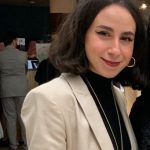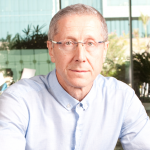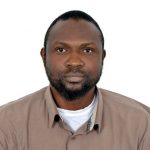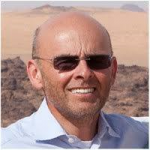Ruba Afifi had joined Saudi Aramco College Degree Program for Non-Employees (CDPNE) in 2014. She graduated from the University of Arizona in 2019 with a BS degree majoring in Geophysics and minoring in Mathematics. During her time in college, she engaged in geochronological research to extract zircons from clastic and volcanic rocks and perform U-Pb dating to find their ages. She also contributed in a study with Dr. Jay Quade to construct a paleogeographical timeline for the evolution of river systems in the Afar Rift in Ethiopia, which opens the opportunity to trace the origins of the first hominin species through time and space. Since graduating, Ruba has been in training assignments as an Exploration Geoscientist in Exploration Resource Assessment Department. During her assignment, she applied the Play-based Exploration workflow in South Jaladi area. Ruba had excelled in her PDP training programs, UPOP and STEP. She had been selected as the female MC for the 25th cohort of STEP’s graduation ceremony. Ruba proudly identifies herself by her organization skills, fast learning abilities and her scientific mind.
Abstract
By the end of this century, the climate is likely to warm by 2 oC since pre-industrial times; model forecasts supported by observational and physical evidence of global warming suggest so (Stocker et al., 2013). On a regional scale, climate change is more evident in lower latitudes than in middle latitudes; warm dry regions are becoming warmer and dryer, and wet regions are becoming wetter. Ice sheets and glaciers are melting, causing together with the thermal expansion of water a notable rise in sea level. In desert regions such as the Middle East, livelihoods are affected, as seasonal mean temperatures are already near the tolerance level for humans and other species. As a result, productivity is decreasing and the pressure for migration is increasing (Hansen & Sato, 2016). The principle cause for climate change is the increase in greenhouse gas concentrations, fundamentally CO2, in the atmosphere. Reduction of CO2 emissions is proven to be a difficult and slow process.
There are current negotiations around developing and deploying technologies that aim to decrease global temperatures, and thus diminish the impact of climate change; these technologies include Carbon Dioxide Removal (CDR), and Solar Radiation Management (SRM). The former directly captures CO2 from the atmosphere, while the latter allows the Earth to absorb less solar radiation. This paper recites facts about each strategy’s mode of function, timescale over which it is effective, and the associated risks and uncertainties. Policymakers should invest in research and development for these technologies as soon as possible. SRM seems to be a less costly and fast-acting solution to counter the effects of climate change in the short-term and, if implemented, would buy time for more fundamental adjustments. On the other hand, CDR technologies are likely more effective to diminish future changes in the climate in the long term, with less environmental risks.
Full paper
 Login
Login Register
Register











